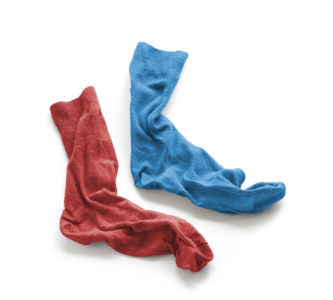 Winter is nearly here, and that means the streets and sidewalks will soon be filled with snow and slush as the temperatures rise and fall. If you don’t have a quality pair of shoes, snows can make it’s way into your shoe and cause your socks to get wet. This is a mildly annoying feeling, but it can also lead to some negative consequences for your foot health. Today, we take a look at some of the problems associated with wet socks, and how to prevent moisture from getting into your shoe.
Winter is nearly here, and that means the streets and sidewalks will soon be filled with snow and slush as the temperatures rise and fall. If you don’t have a quality pair of shoes, snows can make it’s way into your shoe and cause your socks to get wet. This is a mildly annoying feeling, but it can also lead to some negative consequences for your foot health. Today, we take a look at some of the problems associated with wet socks, and how to prevent moisture from getting into your shoe.
Problems With Wet Socks
Aside from being uncomfortable, wet socks can cause a couple issue with your feet. They can lead to:
1. Sores and Blisters – Wetness can increase the friction between the foot and the sock, and if it’s not taken care of, it can lead to sores and blisters on your feet.
2. Rashes Or Athlete’s Foot – Dampness is a breeding ground for bacteria, and rashes or fungus can develop if your feet are constantly in a wet sock or shoe. Keeping your feet dry can help prevent similar issues like athlete’s foot.
3. Trench Foot – Named for soldiers whose feet were constantly exposed to cold and wet conditions, prolonged use of wet socks and shoes in the winter months can lead to damage to the skin, blood vessels and nerves in the feet. It can take months for your foot to heal, and it may never regain some sensations if damage is extreme enough.
4. Frostbite – Similarly, if your socks are wet and you’re outside in very cold temperatures for long periods of time, you could develop frostbite on your toes. This can lead to permanent toe damage and the possible need to amputate the damaged toes.
Tips To Prevent Sock Wetness
Keeping your feet try comes down to planning ahead and being prepared for the elements. Follow these tips to help keep your feet dry this winter or anytime it’s wet outside.
- Invest in a quality shoe or boot that doesn’t allow moisture in.
- Change your socks any time they get wet.
- Pack an extra pair of socks and shoes if you believe your feet might get wet.
- Routinely inspect your boots for holes, especially if you’re just pulling them out of the closet for the first time this season.
- Try avoid puddles and slush when walking, even if splashing in the puddle sounds fun.
- Contact a foot specialist if you believe you’re suffering from a wetness-related foot issue.